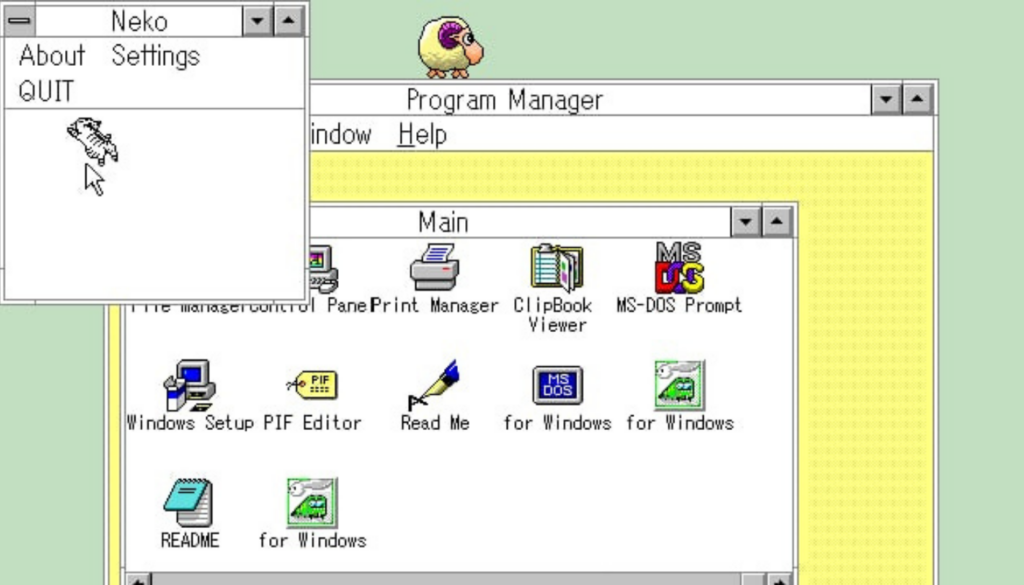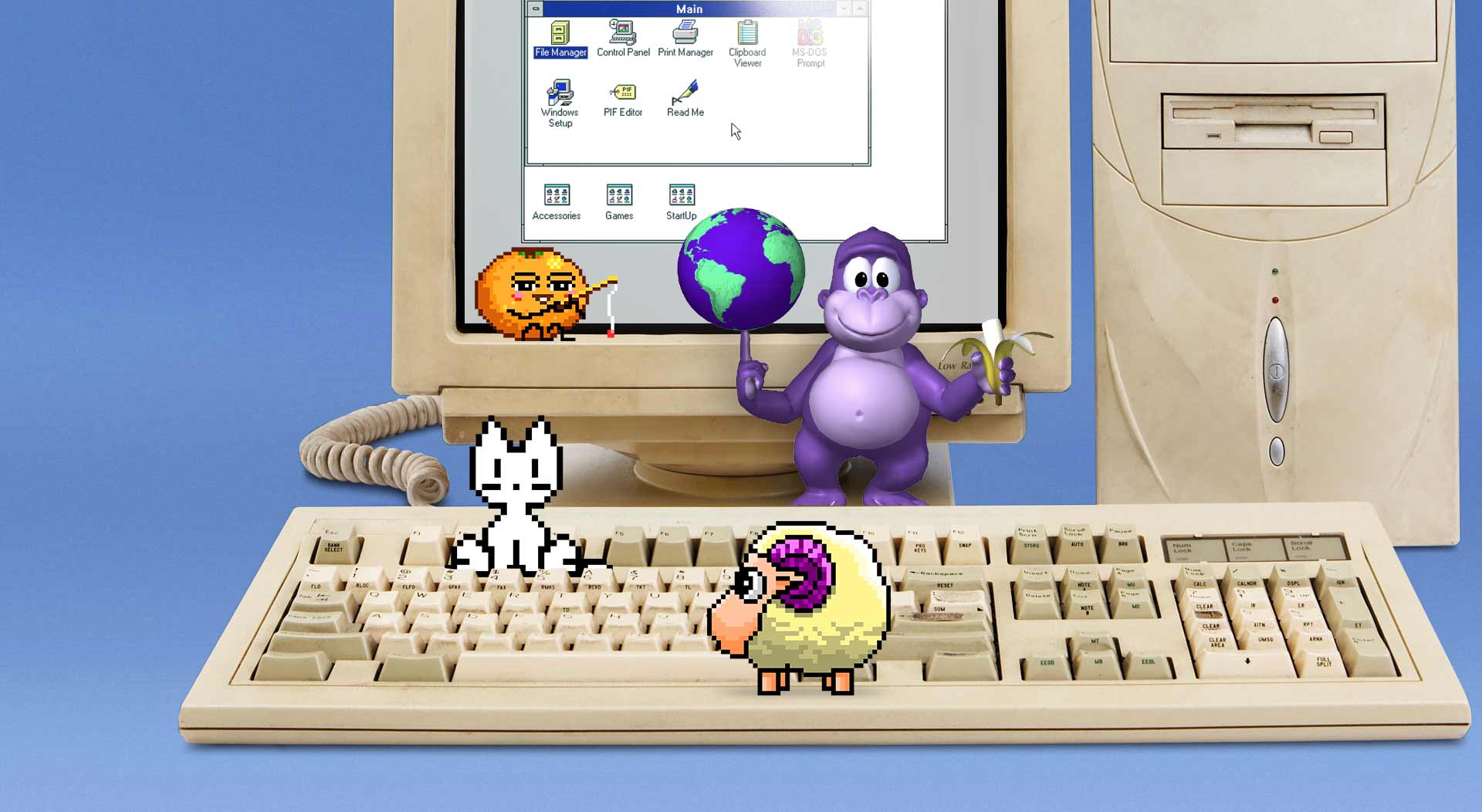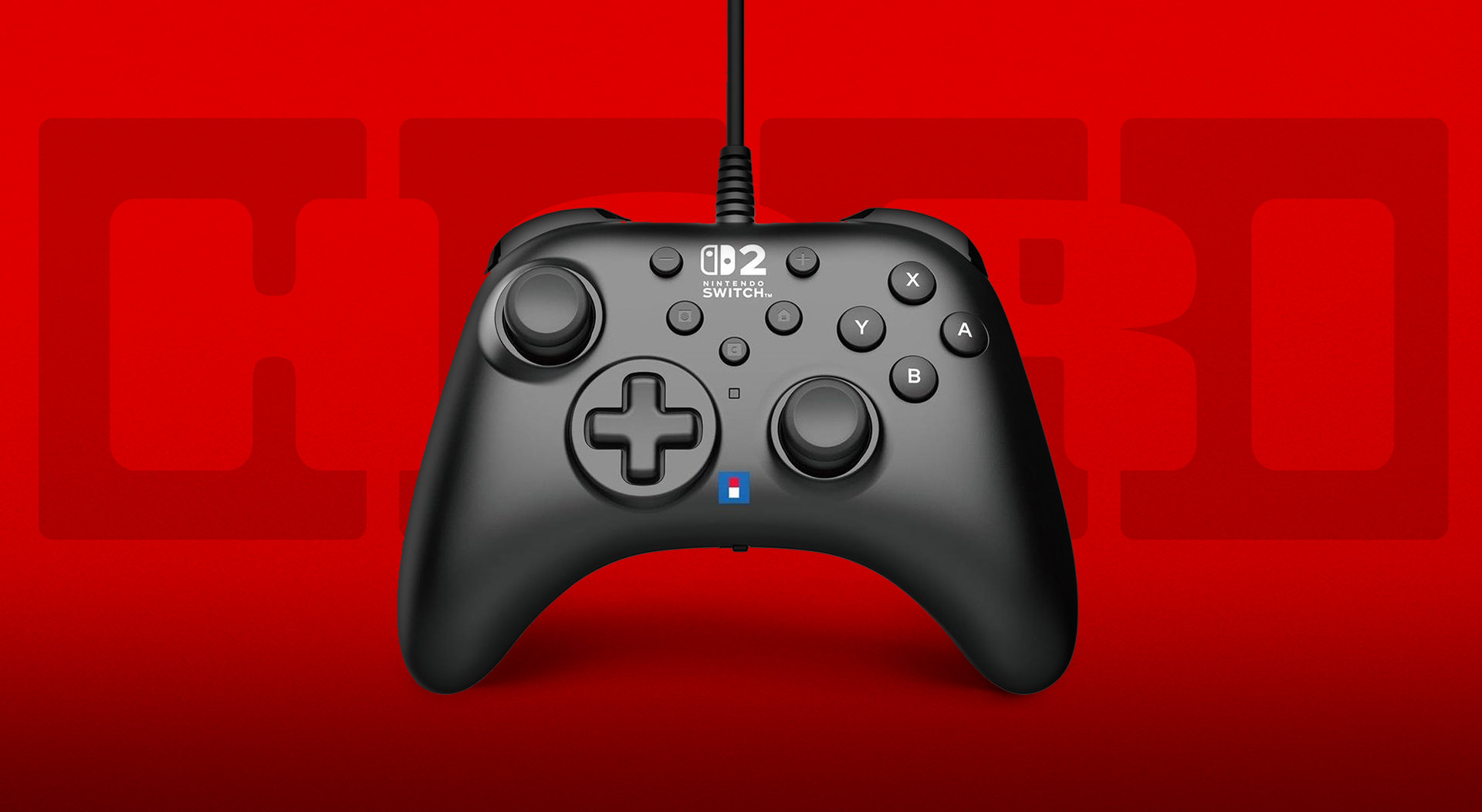
Back in the 90s, we didn’t have a constant flurry of notifications to worry about when we turned on our devices (unless we’d installed an unsavoury toolbar). As a result, at times the environment felt a bit more… lonely. But who or what could fill the gap?
Without a sibling or a close friend to hand, computer games were generally relatively one-sided. There were some very interesting, elaborate virtual pet programs, however these were often fairly expensive. On top of that, your pet could be susceptible to permanent vacations if you spent a day or two away from your PC. This left a perfect little niche to be filled by Screen Mates.
Coming in conveniently shareable sizes, these toy-like programs let cute little critters run around on your desktop. They could be switched on or off at will, and required no real ‘care’. Naturally, this made them appealing to even the youngest of computer users. Here are some of the most memorable companions of the early Screen Mate era.
NEKO.EXE
Neko was originally launched in 1980 for the NES PC-9801, but this open-source little kitty roamed its way across multiple systems. The program allowed a small cat to chase your cursor around, keeping you company while you worked or played.
Neko, in its simplicity and ease of access, also inspired many to modify its sprites. Many Neko owners created cats resembling their own real life companions. Several also changed the sprites entirely, for example, to look like classic game or cartoon characters. For many people, this was likely their first foray into dabbling in software development! This resulted in countless new friends to collect.
Neko continued as a prominent icon of 90s PC adopters, going on to feature in many Geocities-era gifs and banners. Even today, Neko is still being initiated into all sorts of software, such as Spotify and Discord!
SHEEP.EXE
A sheep of many names (and as a result, many trivial arguments in the school computer lab),
Stray Sheep, or SHEEP/POE/POO/SCMPOO.EXE, remains one of the most well-loved Screen Mates of all. The character is modelled on Fuji TV’s STRAY SHEEP スクリーンメイト – Specifically, the protagonist Poe. The tiny program also features occasional appearances from his companion Merry, and Hue the alien.
Poe runs across your desktop performing various actions. This may involve climbing your screen, leaping and bounding, eating flowers, and even letting out the occasional bleat or sneeze!
Holding down Ctrl, Shift and Alt, then double clicking your Stray Sheep, also unlocked a debug screen. This lets you command Poe’s actions at your whim. You can even unleash several sheep on your desktop at once, but this often makes them a little glitchy!
This cute little guy had a few other nifty features hidden away. You could activate an alarm, which would make him bleat every hour, almost like a makeshift pomodoro timer. He would also chew on any icons you dragged to his mouth, and if they were .wav sounds, play them out loud!
If you’re particularly endeared to this little fella, he also featured in other properties. Perhaps most notably, the Japanese-exclusive PSX game, Stray Sheep: The Adventure of Poe and Merry. There’s also quite a lot of Stray Sheep merchandise floating around the web – Poe seems to have inspired more plush creations than all the other Screen Mates combined!

ORANGE.EXE
Another ScreenMate with its origins rooted in Fuji TV, ORANGE.EXE even played nicely with Poe. This mysterious character made its first appearance on the early 90’s children’s TV show, Ugo Ugo Lhuga. Its official name is ‘Mikan Seijin’, or ‘Alien from the planet Tangerine’.
This extraterrestrial, anthropomorphic fruit was one of the more enigmatic desktop companions.
Orange.exe functioned in a very similar manner to Poe, but with generally more bizarre behaviours. While you were poking around on your PC, your virtual dose of Vitamin C might be fishing, reading, or smoking in mid-air. At times it also created little holes in your screen, potentially ruining the experience for anyone with trypophobia.
Something about this character seemed to fascinate people from all over the world. They charmed and mystified us, and have even spawned many fan/meme videos as a result.
In the early 90s, it was fairly rare to obtain software from non-English-speaking countries. Due to their shareability, Mikan Seijin and its desktop compatriots were truly significant and captivating pieces of cultural exchange.
BONZIBUDDY.EXE
BonziBUDDY. “Your Best Friend on the Internet!” This purple ape has since birthed many a meme, but once upon a time, it seemed incredibly revolutionary. Bonzi was a purple ape that hung out on your desktop and touted all sorts of skills.
Built on the back of Microsoft Agent, Bonzi began his life in 1999 as a green parrot named Peedy. By the year 2000, he’d morphed into his final, iconic, gorilla form. He can send email, sing, dance, tell jokes, and get involved in all sorts of other web-based activities. Bonzi had a frequently advertised value of $40, but was always free to download and use.
The reign of the purple gorilla lasted from 1999 all the way until 2004 – impressive longevity for a software product of its time! By his downfall, Bonzi was often regarded as an annoying, allegedly malware-ridden fiend. But nowadays, people often fondly remember him as their little PC pal.
Catching up with old friends
Whenever Screen Mates come up in conversation, they’re often met with a flurry of delight, particularly Stray Sheep. They may harken memories of cute little toys, pets, or friends… or just general pangs of nostalgia, but in their prime, they scratched an itch that’s now mostly defunct.
That said, if you’re missing any of your old friends, many of them have now been ported to several other platforms. They’re easily sought out if you want a bit of company. Plus, if you’re seeking a newer friend (or fiend) for your desktop cohort, there’s always Desktop Goose…





